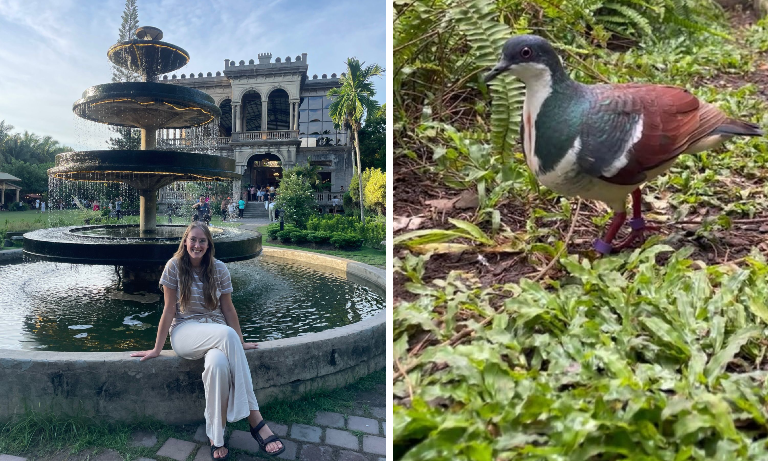Standing up for the veterinary profession
08 Aug 2024
24 Mar 2025 | Natasha Tredgold
Last year’s BVA Research Travel Scholarship winner, Natasha Tredgold, shares her experience conducting research in the Philippines on Negros Bleeding Heart Doves.

My project
I am incredibly grateful to have been awarded the 2024 BVA Research Travel Scholarship and was delighted to be offered the opportunity to develop my interest in wildlife medicine and welfare.
My research project was in partnership with the conservation organisation Talarak Foundation and focused on Negros Bleeding Heart Doves, a critically endangered bird endemic to the Philippines. Forest loss and the live bird trade have restricted this forest-dwelling bird to just 4-8% of its original habitat. Talarak have ongoing reintroduction programmes with captive breeding at Negros Forest Park in Bacolod City and releases into the Bayawan Nature Reserve. Experiencing both locations allowed me to gain a deeper understanding of the importance of this conservation work and appreciate the success of the programme.
Investigating behavioural activity
I investigated the spatial use and behavioural activity budgets of doves fitted with radio telemetry harness attachments. Post-release monitoring is an essential part of any reintroduction programme, but the device and its attachment should not affect the animal’s behaviour and movement as this could reduce post-release survival. If more time is spent in low-energy behaviours, this could increase predation or reduce foraging efficiency. Additional weight may be particularly problematic for smaller birds’ behaviour. I felt incredibly privileged to be able to conduct this research with such an important endemic species whose rarity and timidity have led to their behaviour being poorly understood. Increasing knowledge on the welfare implications of telemetry harness attachments in this species aims to avoid trial-and-error methods of harness-attachment. This hopes to reduce negative behavioural changes, bird handling time, stress, and the time spent in captivity prior to release.
Reflections on the experience
I found monitoring the bird’s behaviour using continuous focal sampling very enjoyable, especially as I could take the time to appreciate their social behaviours. I found it was very easy to become emotionally attached to individual birds as I started to understand their individual personalities. Unfortunately, after harness fitting, there were some minor physical complications which had not been observed during initial fit testing. This was difficult for me but allowed me to reflect on the potential welfare issues that can arise during veterinary and conservation interventions. However, I found it incredibly rewarding to have the opportunity to build off previous literature and report that telemetry device attachment does have the potential to affect natural behaviours. I felt this work was important considering that the harnesses are intended to remain on the birds for an extended period post-release.
Additionally, this project was a great opportunity to develop my study design and statistical analysis skills within wildlife medicine.
Future plans
I am now in my final year at the University of Liverpool School of Veterinary Science and will shortly be undertaking my elective at Chester Zoo. In the future, I would love to use my veterinary degree to work with wildlife as much as I can, so I feel incredibly grateful to have had this opportunity and would like to express my gratitude towards the BVA for their support. I look forward to gaining further experience in wildlife and conservation medicine and am excited about where this may take me in the future. I would wholeheartedly recommend that other students aspiring to do research consider applying for this grant. I would also like to thank the Langford Trust for their support and the team at Talarak Foundation, especially Matt Ward, Dr Monica Atienza and Justine Magbanua for sharing their knowledge and time to facilitate and support me with this project.
Get tailored news in your inbox and online, plus access to our journals, resources and support services, join the BVA.
Join Us Today